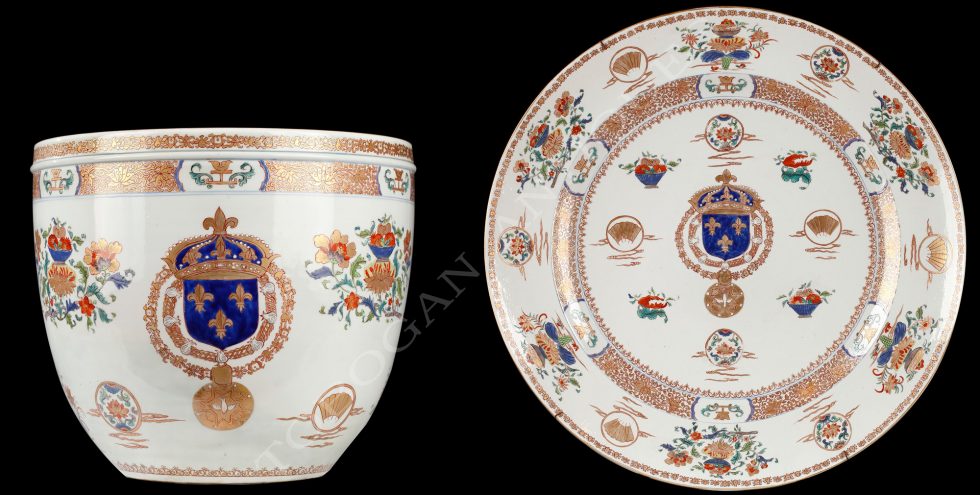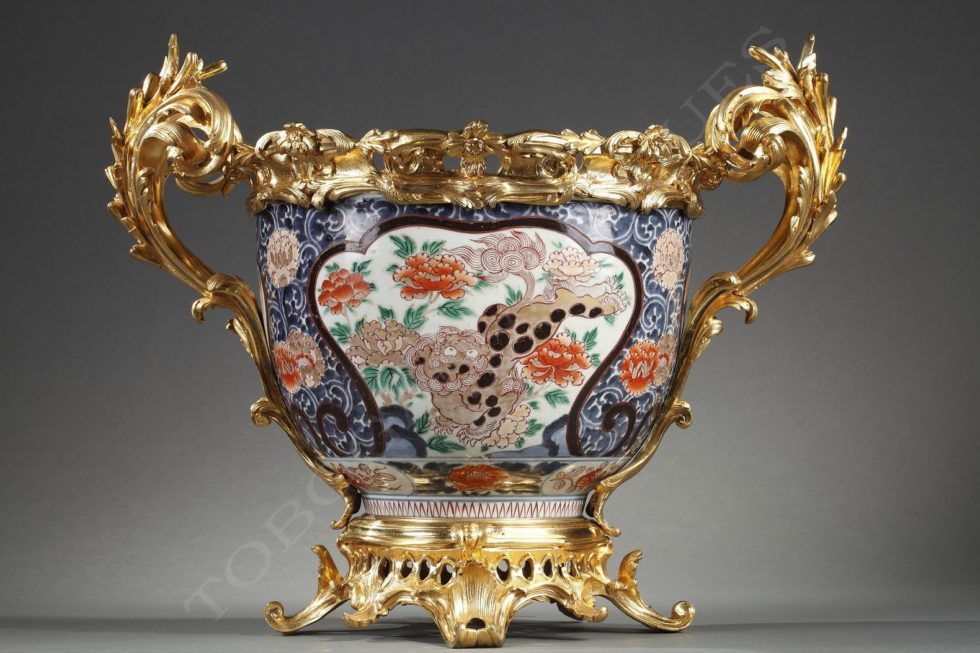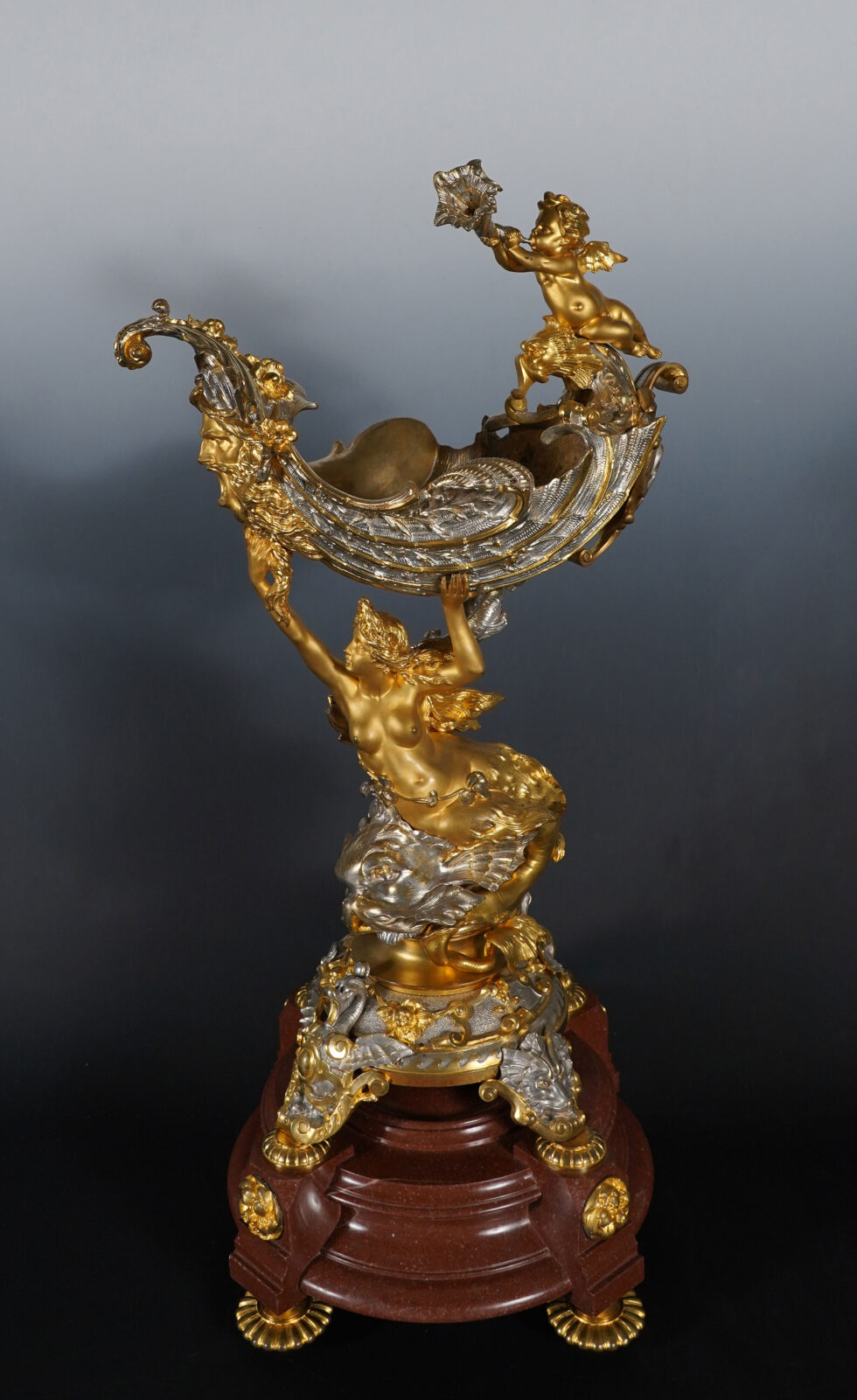Ref 1573
G. Servant
Bronze-caster
(1828-c.1890)
(attributed to)
Important caryatid planters
France
Circa 1875
Patinated and gilt bronze, black marble
Tallest caryatid – Height : 225 cm (88.6 in.) ; Width : 65 cm (25.6 in.) ; Depth : 40 cm (15,7 in.)
Two smaller caryatids – Height : 183 cm (72 in.) ; Width : 55 cm (21.6 in.) ; Depth : 21 cm (8,3 in.)
An outstanding set of three monumental black marble and bronze caryatid planters in the Greek style. All three are caryatid terms on pedestal: the tallest one is shaped as a Grecian woman with her antique drapery and gilt bronze ornaments, such as belt, necklace, headband and garlands, surmounted by an Ionic capital supporting a large planter adorned with foliage pattern and a vase in patinated and gilt bronze. Two smaller planters complete the set, using the same ornamental patterns: the Grecian head with necklace and garlands, the pedestal enriched with inlaid ears, and at the top, the planter adorned with foliage and rings, resting on an Ionic capital.
These monumental caryatid planters might have been commissioned by a French collector for his Parisian Hôtel particulier. The style of the figures evocates the contemporaneous sculptures of the Opéra Garnier in Paris (c.1875), and the works Servant exhibited at the Universal Exhibition in Paris in 1878.
Biography
Georges Emile Henri Servant (1828-c.1890), who took over his father in 1855 at their foundry, rue Vieille-du-Temple, in Paris, specialized in the production of neo-Egyptian style clocks, very popular in France since 1860’s, and also the making of Greek style decorative objects. He drew considerable attention to the high quality of his bronzes at the 1855 Paris Universal Exhibition and then at the 1862 London Exhibition. At this time Servant exported up to 40% of his production, principally to the United States. But his success came really at the 1867 Paris Universal Exhibition, where he was awarded a gold medal for his neo-Greek works. Servant was even awarded in 1874 the « Ordre national de la Légion d’Honneur », France’s highest official mark of recognition. Servant participated once again successfully at the 1878 Paris Universal Exhibition, where he not only exhibited vases and small bronze pieces of furniture, but was also a member of the jury for the class of bronze pieces of art. He finally retired shortly before the 1889 Paris Universal Exhibition.
Bibliography
Les Merveilles de l’Exposition Universelle de 1867, t. II, p° 165 & 167.
The Art Journal Catalogue of the Paris Universelle Exposition of 1867, London, 1867, p° 20.
Exposition Universelle de 1878, Rapport sur les bronzes d’art, Groupe III, Classe 25, p° 26.
Contact us
Tobogan Newsletter
If you want to be up-to-date with our new acquirings you can sign up to our newsletter.











